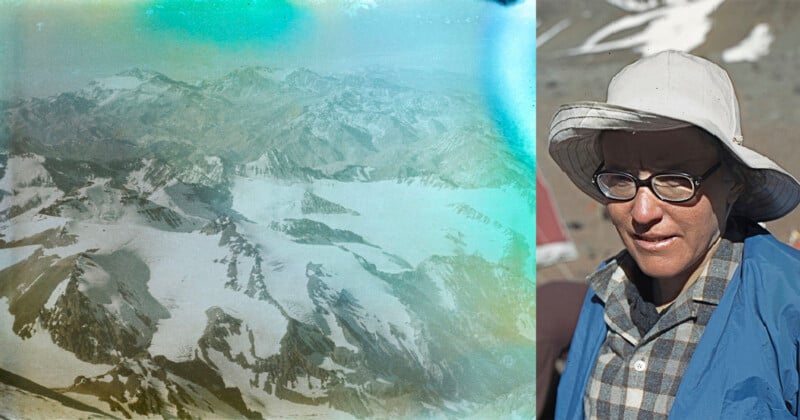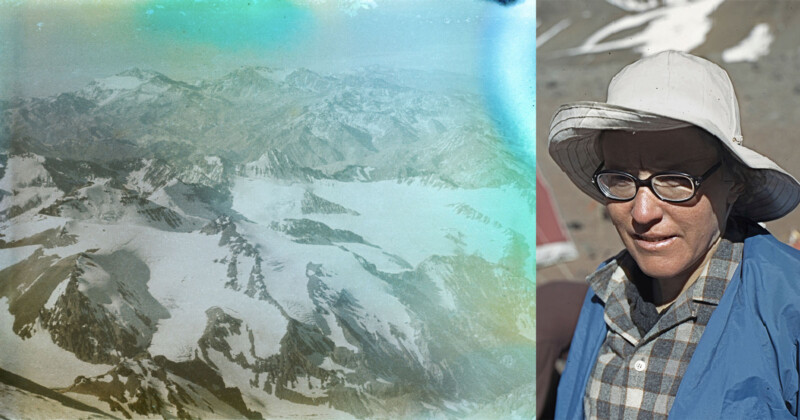

A Nikomat 35mm film camera once belonging to American mountaineer Janet Johnson has been discovered in a receding glacier.
Johnson died during an expedition on Mount Aconcagua in Argentina in 1973 under circumstances that many deem to be suspicious.
The camera with the film still inside was passed to The New York Times which published a long report on the decades-old mystery.
The dial on Johnson’s camera showed that 24 exposures had been made and the canister was sent to Film Rescue International in Canada; a team that specializes in developing old, forgotten film.
The technician who processed Johnson’s film tells The Times that if he didn’t know it had been on a glacier for 50 years then he “would have assumed it was on a shelf somewhere.”
Johnson’s photos show an amateur photographer who knew how to operate an SLR camera and capture good photos.
The last photos that she took were spectacular views of the Andes and The Times notes that if she was oxygen-deprived or delirious, “she still knew how to focus the lens, compose the frame, and hold the camera steady to take clear photographs.”
The Case
Johnson left Portland, Oregon with nine other members of the climbing crew on January 19, 1973. Arriving two days later, the crew began their ascent with two members quitting and turning back six days in.
Mount Aconcagua is a 22,831-foot mountain, the highest outside the Himalayas, but Johnson was considered one of the strongest climbers on the crew thanks to her experience scaling every 14,000-foot peak in Colorado.
The expedition team did not get along and there were conflicts in the group. Only four made an attempt to the summit but Johnson died just above the high camp along with John Cooper, a NASA engineer.
Many of the crew suffered from hallucinations, disorientation, and were irrational. Differing accounts were given as to what happened to John and Coope who both died of a brain injury, according to an autopsy.
Johnson’s body was found two years later in 1975 with a battered face and blood stains on her jacket. The experienced Argentine mountaineers who found it were “disturbed by the circumstances” and suspected foul play.
“They were killed,” Daniel Araujo, an assistant to the medical examiner on the autopsies, tells The Times. “Both of them. These kinds of injuries were not self-inflicted.”
The base camp manager Roberto Buston says that “it’s a different world at 6,000 meters (20,000 feet), with different laws and rules.”
Johnson’s recently processed camera film raises more questions than answers, adding to the mystery.
Last year, a historic cache of camera equipment abandoned in 1937 by two notable mountaineers was found on a glacier in Canada’s Yukon territory.






